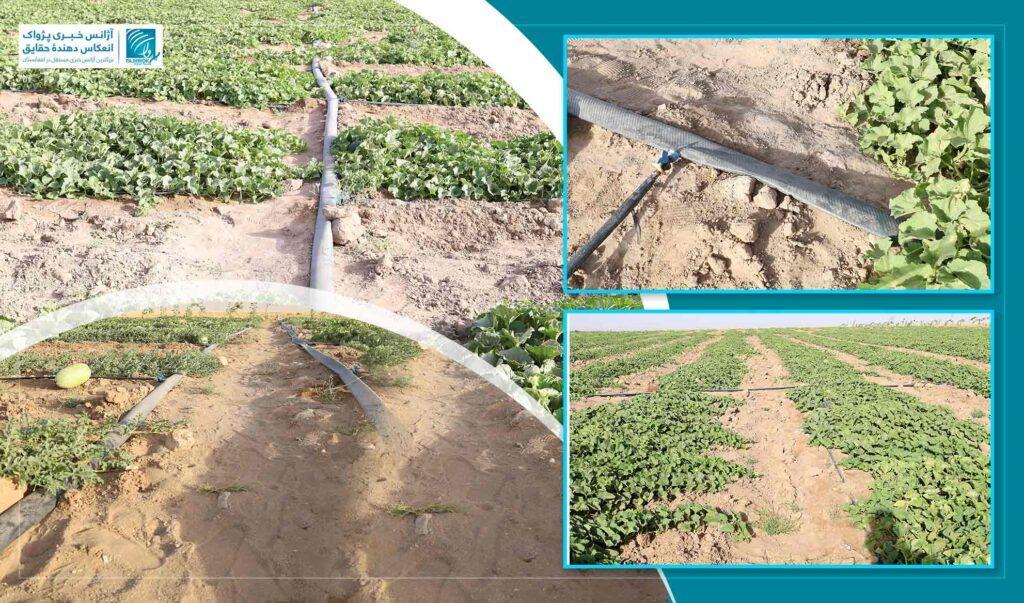
Herat Farmers Increasingly Turn To Drip Irrigation System
KABUL (Pajhwok): A number of landowners and farmers in western Herat province say the drip irrigation system not only drastically reduces water consumption, but also enables the cultivation of more land and leads to higher crop yields.
Officials at the provincial Department of Agriculture, Irrigation and Livestock report that the system is expanding across various districts, with training programmes planned to familiarise farmers with its use.
Fazl Ahmad Ahmadi, a farmer from Pashtun Zarghun district who uses drip irrigation, told Pajhwok Afghan News that although the initial cost was high, the results were far better.
He urged agricultural officials to provide more training to farmers and called on partner organisations to offer financial support.
Previously used mainly in greenhouses, the drip irrigation is now being adopted in open fields. Ahmadi described the benefits as striking:“The soil stays moist and crops grow better.”
Another farmer, Gul Ahmad Karimi, shared a similar experience:“We have always struggled with water scarcity, but this method allows us to achieve higher yields with the same amount of water.”
He added that drip irrigation effectively reduced water usage and kept the soil consistently moist, which in turn enhanced crop growth and productivity.
Agricultural experts emphasise that in water-scarce conditions, this method could revolutionise farming in Herat.
Farid Ahmad Sheikhzadeh, an agriculture specialist, said that even during drought, farmers could harvest crops twice a year using this system.
Bashir Ahmad Bahaduri, head of the Chamber of Agriculture and Livestock, stressed the importance of adopting low-water irrigation methods, noting that their wider use was vital to addressing water shortages.
Meanwhile, the provincial Agriculture Department reported success with drip irrigation in the cultivation of vegetables, fruits and melons, saying the system was effective in managing water and preventing wastage.
Bashir Ahmad Ahmadi, head of agricultural affairs at the department, told Pajhwok that training programmes and workshops promoting drip irrigation had been widely welcomed by farmers, particularly in light of reduced rainfall.
Despite the high initial cost, drip irrigation is increasingly recognised as an efficient solution for coping with water scarcity and boosting agricultural productivity in Herat.
Experts explain that in the drip system, water is delivered directly to the roots of plants and trees through pipes and drippers, enabling larger areas to be irrigated with minimal water and resulting in better yields.
kk/ma

Legal Disclaimer:
MENAFN provides the
information “as is” without warranty of any kind. We do not accept
any responsibility or liability for the accuracy, content, images,
videos, licenses, completeness, legality, or reliability of the information
contained in this article. If you have any complaints or copyright
issues related to this article, kindly contact the provider above.
Most popular stories
Market Research

- PU Prime Launches Halloween Giveaway: Iphones, Watches & Cash Await
- Ozzy Tyres Grows Their Monsta Terrain Gripper Tyres Performing In Australian Summers
- Edgen Launches Multi‐Agent Intelligence Upgrade To Unify Crypto And Equity Analysis
- Zeni.Ai Launches First AI-Powered Rewards Business Debit Card
- M2 Capital Announces $21 Million Investment In AVAX Digital Asset Treasury, AVAX One
- Tria Raises $12M To Be The Leading Self-Custodial Neobank And Payments Infrastructure For Humans And AI.



















Comments
No comment